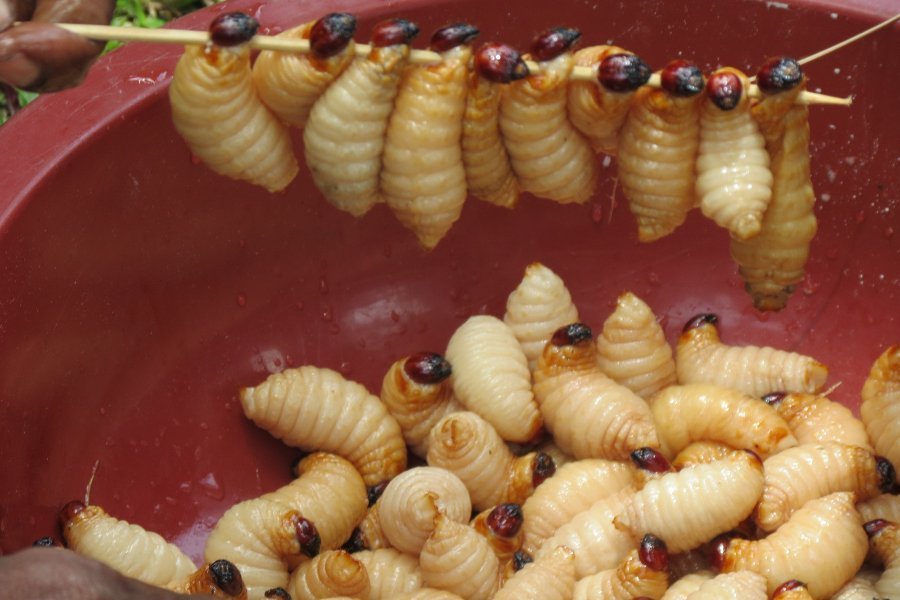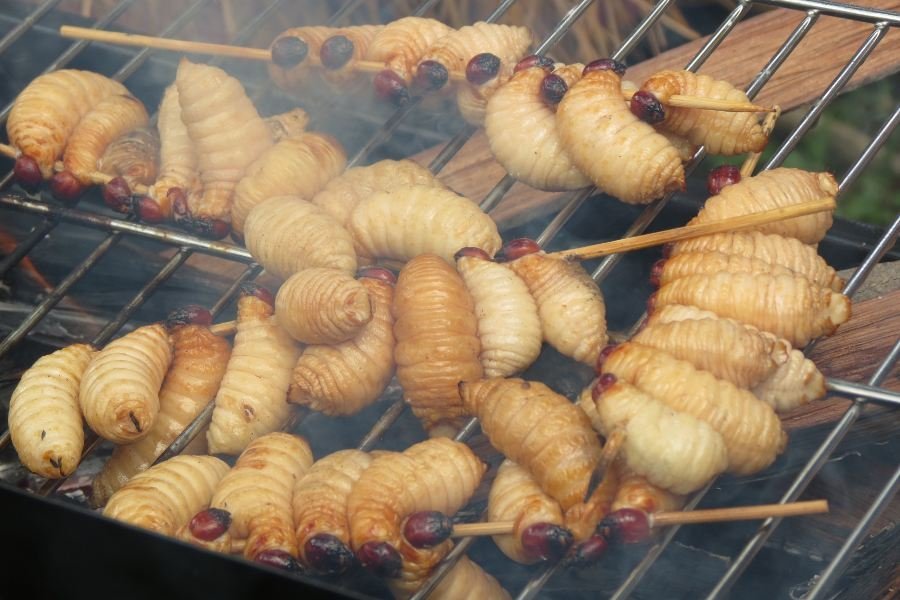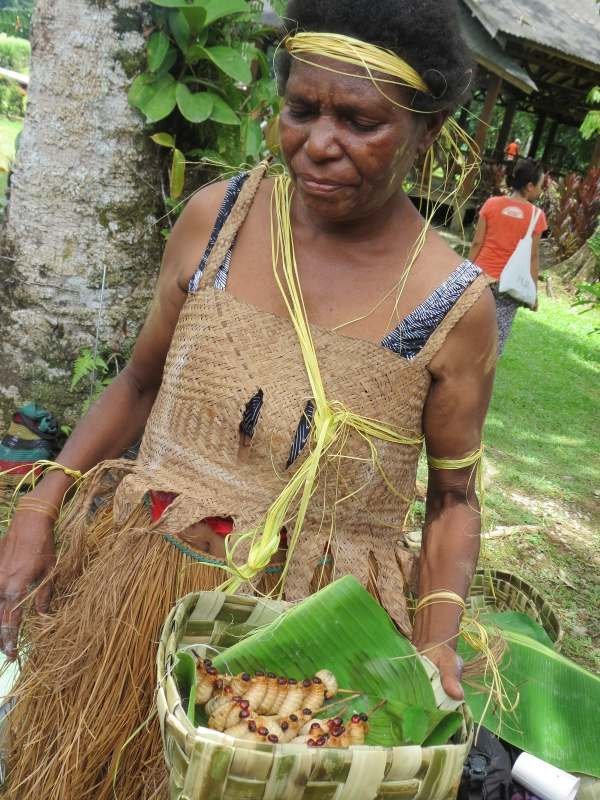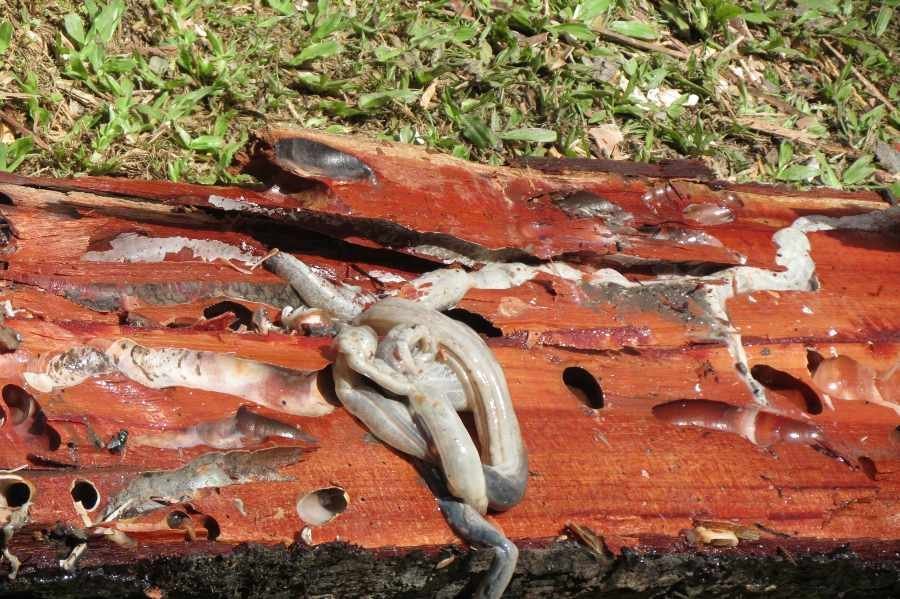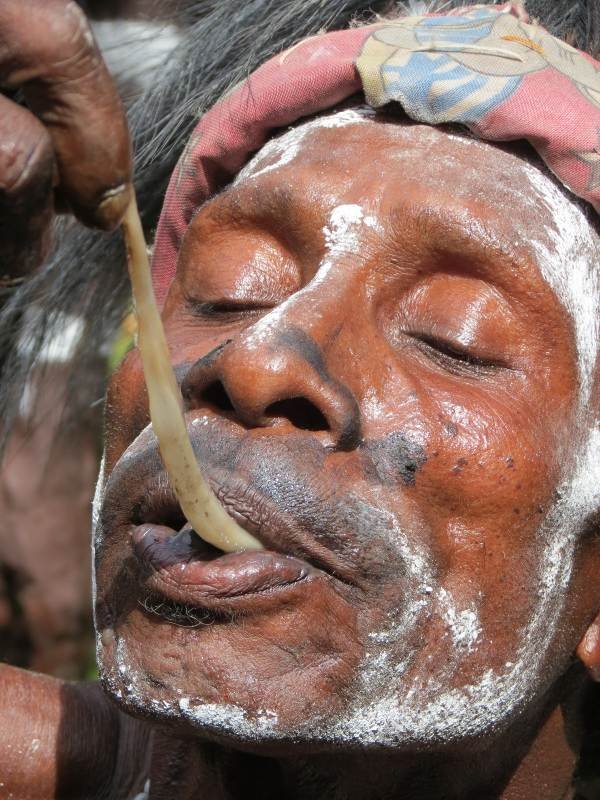Celebrating the technical mastery and aesthetic power of island works.

The exhibition showcases pieces from a premier collection,
many rarely displayed because of their size or fragility.
Yale Univeristy Art Gallery
East of the Wallace Line: Monumental Art From Indonesia and New Guinea
Yale University Art Gallery
Through Feb. 1, 2015
New Haven, Conn.
In
a gallery painted the color of the ocean on an overcast day, a
totemlike pole rises and splits into a large V, a giant stylized snake
sports a horse's head and two riders, and a flat gravestone slashes the
air like a giant shark's fin. These are just some of the arresting works
in "East of the Wallace Line: Monumental Art From Indonesia and New
Guinea," Yale University Art Gallery's exhibition of almost 140 18th- to
20th-century objects from island cultures in Southeast Asia.
The
line in the title refers to a demarcation that naturalist Albert Russel
Wallace documented in the 1860s. Some islands, like Bali, have fauna
that relates more to that of Asia, while the ecosystems of neighbors to
the east—Sulawesi, Timor, West Papua, the Moluccas, and others—bear more
similarities to Australia. As we make our way through a display that
subtly evokes island-hopping—interconnected and individual platforms
float in the center, while clusters of works hug the walls like so many
coastal villages—it seems clear that we are not to read much meaning
into this fault line. Rather, it serves as a convenient framework within
which to showcase pieces from a premier collection, many rarely
displayed because of their size or fragility.
All
but one of the artworks are from the collection of Thomas Jaffe, a Yale
graduate who grew up around modern art and developed a passion for
tribal work. It is perhaps not surprising then that many of the
three-dimensional objects have a powerful, modernist presence. A
19th-century carving from the Moluccas, for example, portrays the human
figure in a manner akin to cubism: a three-quarter, a profile and a
frontal view merge into a single, striking silhouette 7 feet tall. And
five well-worn figures from Timor atop a round platform seem like
precursors to Alberto Giacometti's statues. Artists in the 18th- and
19th-century turned the forking of branches and angles of tree trunks
into walking and standing ancestors, their surface now softened by time
and nature.
Throughout the show, there
is a wonderful interplay between simple forms and decorated surfaces,
bold planes and intricate patterns. In a canoe prow from West Papua
dated mid-19th to early 20th century, two big-headed humans stand out,
bold forms amid a dense pattern of interlocking swirls. And in a
tortoise-shell comb made in East Sumba about 1920, delicately carved
deer, long-tailed birds and a central, scorpionlike creature play
against a plain central band and the linear pattern of the comb's teeth.
Often related to ritual and beliefs,
many of the works could spawn dissertationlike wall texts. But in her
first special exhibition since becoming the gallery's inaugural curator
of Indo-Pacific art, Ruth Barnes gives us just enough to appreciate that
the works often served a purpose we might not guess, but not so much
that we drown in the details of symbolism and ritual. She makes sure we
know that many of the figures are effigies that host or commemorate the
spirit of individual ancestors, and that they are still in some places
revered and feared. That some textiles were used in burial ceremonies,
others in village celebrations. And that, say, the buffalo symbolizes
prosperity to the Toraja people, while the forked totem indicates the
union of two clans.
The information
primes us to engage with the works. In a grouping of textiles made by
the Toraja, for instance, concentric square bands teeming with red and
black geometric patterns fill a square piece of barkcloth. The label
only tells us that a headhunter used this as a turban around the year
1900. And this is enough. Headhunting was a ritually charged and violent
endeavor, and we feel it viscerally in the strong diagonal axis the
artist created by interrupting the pattern along two opposing corners so
they look like bright yellow-orange arrows pointing outward.
Speculations and explanations, in this case, would reduce the experience
to words.
The show abounds in moments
like this, often enhanced by the placement of the works. Lined up on a
raised platform that recalls an altar, five 19th-century male and female
ancestors from Flores stand side by side, looking out. At their feet,
Ms. Barnes has placed a contemporaneous threshold—and we sense the shift
it takes to reach the realm of the sacred. Similarly, when we look at
19th-century masks from Timor we have no indication of how they were
used. But rising behind them in our sightlines are the Giacometti-like
ancestors in the corner—and the masks suddenly take on the power of
entry points.
Toward the back of the
gallery, two pale-wood figures, arms held out, palms facing skyward,
stand out against the backdrop of three long tie-dyed banners filled
with a dizzying array of circles and geometric designs made of red and
white dots. Seen together, the banners capture the vibrancy of the sun
and stars while the figures' gestures at once evoke the surrender of
prayer and the power of creation—both of which, it turns out, might be
accurate. The sculptures may be effigies of ancestors or rare
representations of deities, according to a label that seems satisfyingly
redundant.
By journey's end, the
title's reference to Wallace appears more than a convenient framework.
The show notes that he wrote admiringly of the islanders' "love for the
fine arts," but what none of the texts include is that Wallace was also a
committed spiritualist. He would no doubt have approved of a show that
celebrates the technical mastery, aesthetic power and otherworldliness
of island works.
Ms. Lawrence writes about Asian and Islamic art for the Journal









